For drought-tough evergreen borders, select native species like Eastern Red Cedar or Yaupon Holly that require minimal water. Prepare soil with organic matter to promote deep root development. Apply 2-4 inches of mulch while keeping it away from stems. Space plants 2-4 feet apart based on mature size for proper air circulation. Monitor for water stress during dry periods and prune after flowering. These strategies create beautiful, low-maintenance boundaries that thrive even when water is scarce.
Selecting Native Evergreens for Water-Wise Borders
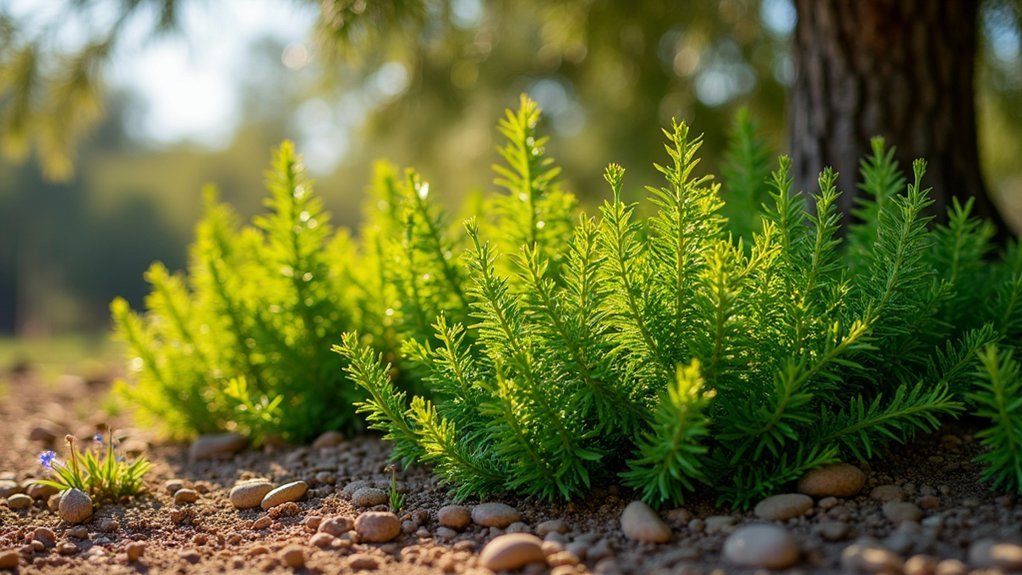
When drought threatens your garden’s survival, native evergreens offer a resilient solution for creating stunning borders that withstand dry conditions. Species like Eastern Red Cedar and Yaupon Holly naturally require less water than non-native alternatives while thriving in your local climate.
Choose drought-tolerant plants that match your USDA hardiness zone and sun exposure needs. Texas Mountain Laurel and Juniper excel in well-draining soil and, once established, need minimal maintenance.
You’ll save time and water while enhancing landscape aesthetics with year-round greenery and seasonal interest. Your water-wise borders won’t just look beautiful—they’ll support local wildlife and boost biodiversity by providing food and habitat for birds and pollinators.
Creating Deep-Rooted Xeriscaping Boundaries
Beyond selecting native evergreens, establishing deep-rooted xeriscaping boundaries offers the next level of drought protection for your landscape.
Proper soil preparation with organic matter creates an environment where drought-tolerant plants like Ligustrum and Loropetalum can develop extensive root systems, accessing deeper moisture during dry spells.
Your xeriscaping border should include:
- Native species like Texas Lantana and Autumn Sage that thrive with minimal maintenance while providing evergreen foliage
- Ground covers such as Creeping Juniper and Candytuft to prevent erosion and retain moisture
- A variety of textures and heights that create visual interest while attracting beneficial wildlife
Mulching Strategies for Moisture Retention
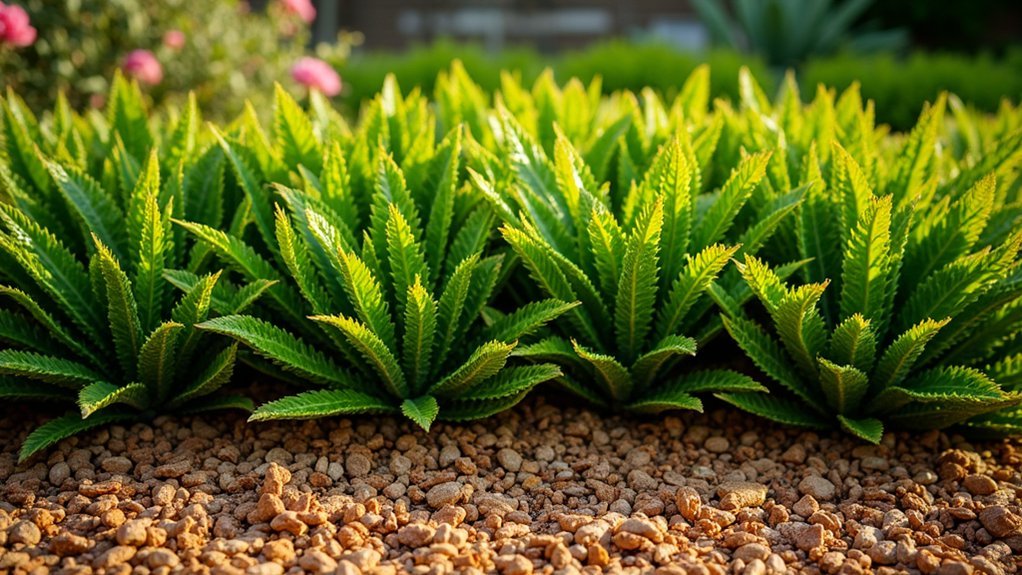
Once you’ve selected your drought-tolerant border plants, proper mulching becomes your next essential defense against water loss.
Apply organic mulch like wood chips or shredded bark at a depth of 2-4 inches around your evergreen borders to greatly reduce soil moisture evaporation.
A thick blanket of organic mulch creates your garden’s moisture-saving shield, preserving precious water for thirsty evergreens.
This protective layer does double duty—it suppresses weeds that compete for water while acting as an insulating layer that moderates soil temperature extremes.
Your drought-tolerant plants will appreciate this temperature regulation, especially during summer heat waves.
Keep mulch several inches away from plant stems to guarantee proper air circulation and prevent rot issues.
Remember that mulch breaks down over time, so commit to regularly replenishing it to maintain its moisture retention benefits.
This simple practice dramatically improves your border plants’ drought resilience with minimal effort.
Proper Spacing and Arrangement of Natural Border Plants
Creating visually appealing drought-resistant borders depends considerably on proper spacing and thoughtful arrangement. When designing your evergreen border plants, allow 2-4 feet between plants based on their mature size to promote healthy air circulation and prevent overcrowding as they grow.
Consider these essential landscape design principles:
- Create a layered effect by positioning taller shrubs at the back and shorter varieties in front for visual depth.
- Group plants with similar water requirements and sunlight requirements together to simplify maintenance and reduce resource competition.
- Implement staggered planting patterns rather than straight lines to achieve a more natural, dynamic look.
Remember that thoughtful spacing respects each plant’s eventual width, ensuring your border maintains its intended form while allowing individual specimens to thrive.
Seasonal Maintenance for Drought-Resilient Living Fences
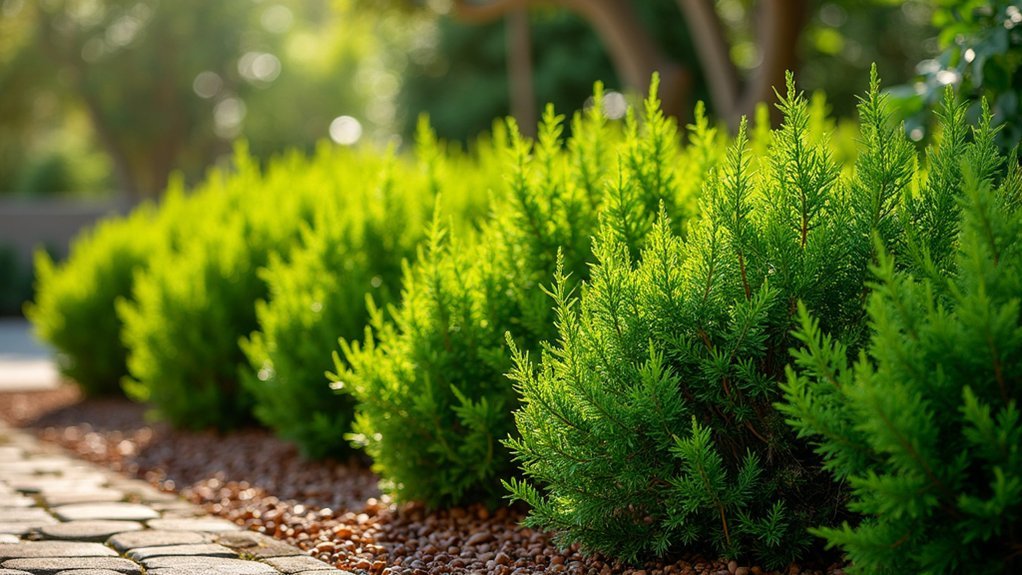
Although drought-tolerant evergreens require less attention than their thirstier counterparts, they still need consistent seasonal care to maintain their resilience and visual appeal.
During dry spells, monitor your evergreen shrubs for water stress signs and adjust watering as needed.
Even drought-resistant evergreens send distress signals during extended dry periods—learn to read their language and respond accordingly.
After flowering, prune your drought-tolerant plants to maintain shape and remove damaged branches, improving air circulation.
Apply mulch around their bases to conserve soil moisture and regulate temperature during summer heat.
As seasons change, inspect for pest infestations, which often target stressed plants.
Consider organic treatments that won’t harm beneficial insects.
In early spring, apply a balanced fertilizer to nourish your living fence.
This slow-release option provides essential nutrients that help your evergreen shrubs thrive despite challenging conditions.
Frequently Asked Questions
What Evergreen Can Tolerate Full Sun?
You’ll find Ligustrum, Distylium, Loropetalum, and Crape Myrtle are excellent evergreens that thrive in full sun. They’re hardy, drought-tolerant options that won’t fail you in bright, sunny locations in your landscape.
What Plants Can Survive in Extreme Heat?
You’ll find Ligustrum, Distylium, and Loropetalum thrive in extreme heat. Don’t overlook Ninebark and Limelight Hydrangeas for hot conditions. Native options like Autumn Sage and Texas Lantana also excel while attracting local pollinators.
How to Help Plants in a Drought?
Water deeply but infrequently, letting soil dry between waterings. Apply mulch to retain moisture. Choose drought-tolerant plants for your zone. Guarantee proper drainage to prevent root rot. Group plants with similar water needs.
What Are the Best Low Maintenance Border Plants?
For low maintenance borders, you’ll love Boxwood, Juniper, and Ninebark. They’re resilient, require minimal pruning, and stay attractive year-round. Native options like Texas Lantana and Autumn Sage need even less attention once established.
In Summary
You’ll find drought-tough evergreen borders are well worth the effort. Select native species, encourage deep roots, apply generous mulch, space plants smartly, and maintain them seasonally for best results. With these five strategies, you’ve got everything needed to create beautiful, resilient boundaries that thrive despite water restrictions. Your water-wise border will stand strong year after year, enhancing your landscape while conserving precious resources.

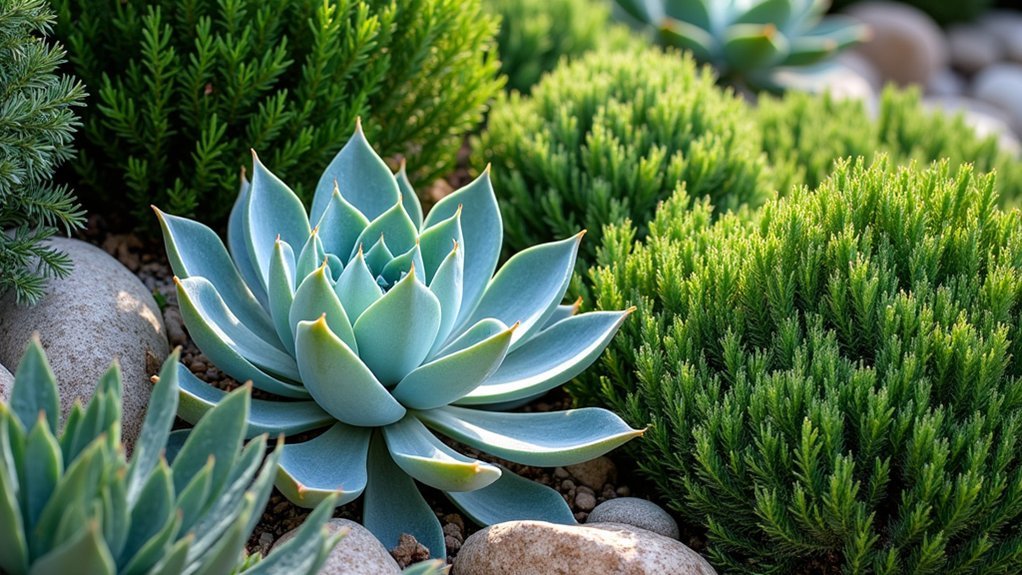

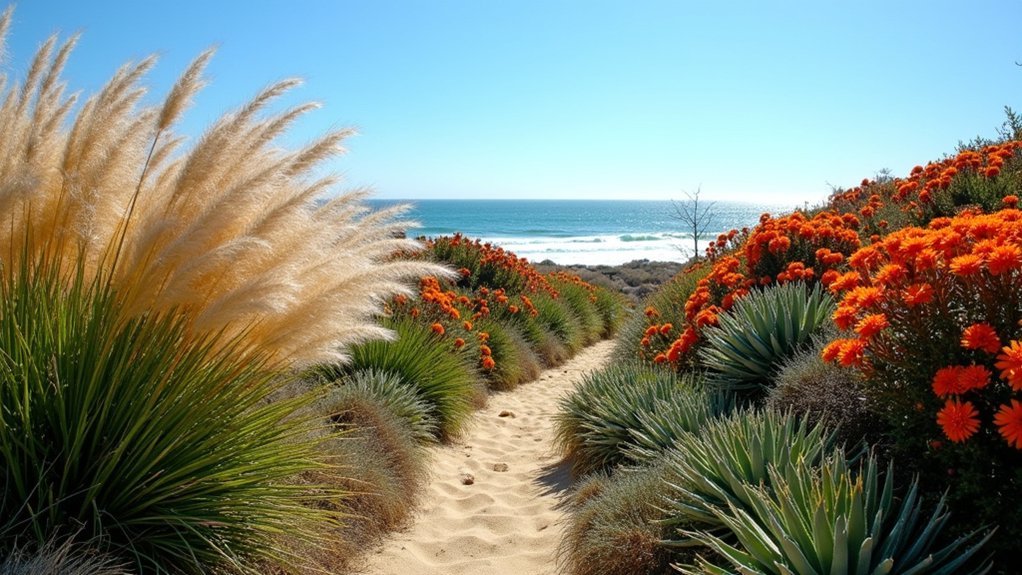
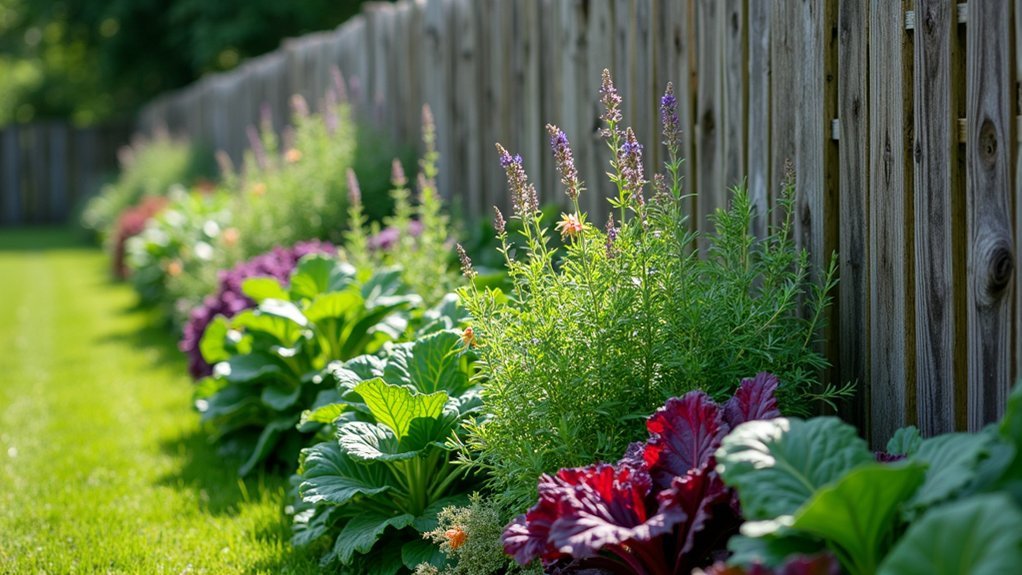
Leave a Reply